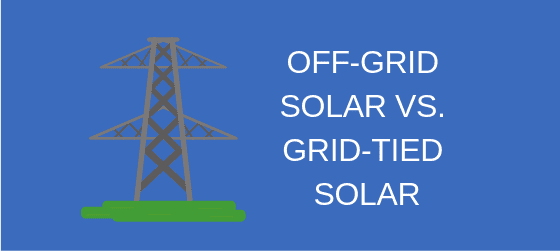
As the name implies, grid-tied solar means the solar system is connected to the electrical grid, and conversely off-grid solar means the solar system is not connected to the grid. But what does that mean for you?
Grid-Tied Solar System
Most of the solar systems that are currently installed fall into the grid-tied category. These solar systems are directly tied into the existing electrical grid and require the electrical grid to be running for the solar system to produce electricity.
Pros of Grid-Tied Solar:
- The cost tends to be cheaper than an off-grid system, due to not needing batteries and other components.
- Net Metering is a billing mechanism that allows the electricity generated by a solar system to offset the electricity used from the grid.
- In some geographic areas, SRECs also benefit the owner of a grid-tied solar system by letting the owner receive extra income through selling the SRECs their solar system produces.
Cons of Grid-Tied Solar:
- When the electrical grid 'goes down', a grid-tied system will not produce any electricity.
Off-Grid Solar System
Many people like the idea of installing an off-grid solar system because of the independence and the stability the solar system will bring to their lives. In theory, an off-grid solar system will produce non-stop energy for 30+ years.
Pros of Off-Grid Solar:
- Off-grid systems provide independence from the electrical grid.
Cons of Off-Grid Solar:
- The cost can be anywhere from 70% to 100% higher than a grid-tied solar system.
- Batteries and other components are needed to consistently deliver electricity throughout the day and night.
Conclusion
For most people, a grid-tied solar system is a solid investment that provides security and predictability for their business, farm or home. The payback for a grid-tied solar system is shorter and there are fewer components that could need to be replaced in the future.
An off-grid solar system is a good option for some cabins and more isolated areas, however, at this time, off-grid systems struggle to compete with the payback and ROI of a grid-tied system.


